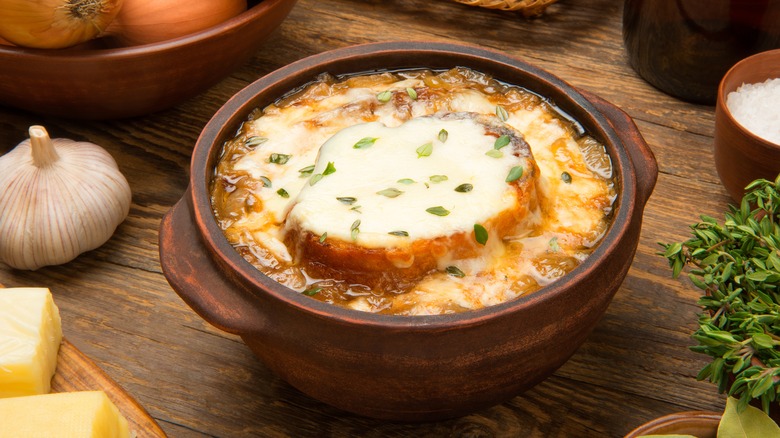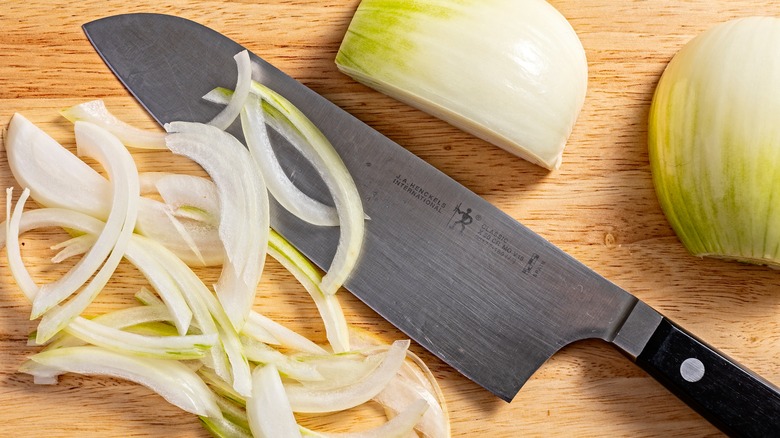How Thick Should Onions Be For French Onion Soup?
French onion sits right beside tomato and matzo ball in the pantheon of all-time great soups. And while it's true that it might be best enjoyed on a breezy afternoon sitting outside Paris' Café de Flore while people watching, it can be equally rewarding to make the dish at home. It's not challenging by any means, but it does require immense patience to make it properly, and quite a bit of time (up to two hours).
The most crucial component in a French onion soup is, not shockingly, the onions. If you're relatively new to French cooking you might wonder how to best prepare them. Recipes aren't always helpful, with most recommending that you simply slice the onions "thinly." Even the queen of French cooking Julia Child offered a recipe that didn't go into any great detail. So, what does that mean? How thin is "thin"? We've got you covered.
When preparing onions for onion soup, what you're really doing is prepping them for caramelization — like you would do for a classic onion tart, for example. In order to do that, you're going to want to aim for slices between 1/8- to 1/4-inches thick. Where they end up on that spectrum is down to your preference, but any thinner and they'll just disintegrate in the soup, and any thicker and they'll end up a little off texturally and unwieldy — far from those lovely stringy bits that are crave-worthy in French onion soup.
Tips and tricks for slicing your onions
Perhaps even more crucial to the final bowl of soup than the thickness of your onions is how you slice them. That might sound confusing: Slicing is slicing, isn't it? But if you consider that how strong the flavor of an onion is depends on the release of a chemical called isoallin, it makes more sense. The compound is naturally present in all onions and is what gives them their characteristic taste. Utilizing onions properly comes with how well you can manipulate isoallin — the release of which is caused by breaking down (or, in other words, chopping) the onion.
If you chop them stem to root, for example, you cause less structural damage, and you'll get a subtler and more rounded flavor. Cut them the other way, and you'll get a much punchier oniony twang. For onion soup, you'll want to cut them stem to root. While a big, bold flavor might seem like the way to go, the caramelization process will still bring out the flavors beautifully. Plus, it's going to be crucial to maintain the structural integrity of your onions to be cooked this way, and slicing lengthwise will do just that.
How much you chop your onions will also affect the strength of their flavor — so if you want a slightly more onion-y tasting soup, lean towards the thinner end of that spectrum we mentioned earlier, closer to 1/8-inch thick. For a subtler, slightly sweeter profile, lean thicker.


